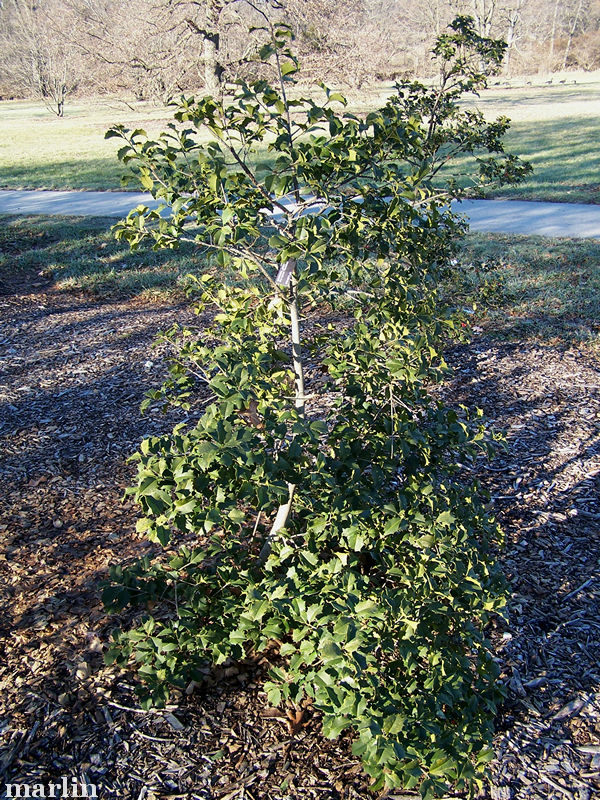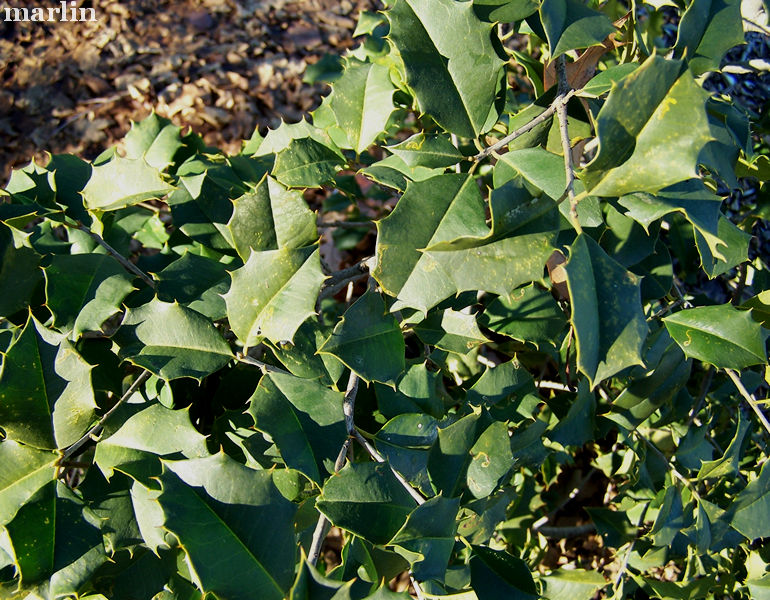Carnival American Holly
Ilex opaca ‘Carnival’

Named Holly of the Year in 2007, this fast-growing American holly boasts orange-red berries.
When the Pilgrims landed the week before Christmas in 1620 on the coast of what is now Massachusetts, the evergreen, prickly leaves and red berries of American holly reminded them of the English holly (Ilex aquifolium). The use of Holly as a symbolic winter decoration, with its shiny, prickly leaves and blood-red berries, goes back in history to the Celtic peoples of Northern Europe, who decorated their homes with it during the time of the winter solstice.
The American holly cultivar ‘Carnival’ is touted as relatively fast-growing at a foot a year.
Commercial holly production often relies on rented honeybees for the cross-pollination required for the female plants to produce fruit. The current crisis in the beekeeping world due to colony collapse disorder may put a dent in holly availability.
In years past, the indiscriminate harvesting of wild holly for Christmas decorations left many plants mutilated or dead. Before laws were passed in Maryland and Delaware to protect the holly, there was a roadside market for holly stolen from trees that did not belong to the sellers [1].
References:
1. H.E. Grelen, USDA Forest Service Silvics manual Vol 2, ‘Ilex opaca Ait. American Holly.’
North American Insects & Spiders

